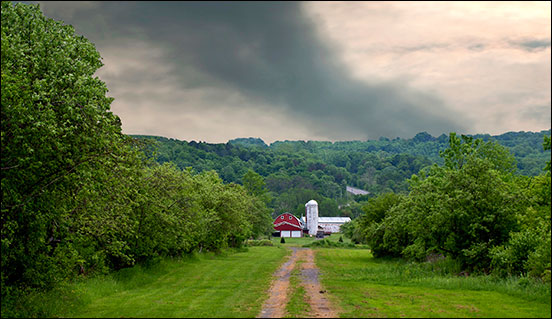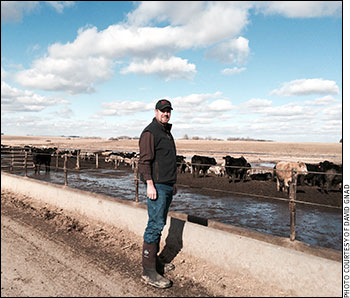
Where to Turn When Disaster Strikes
Resources are available to cattle producers for emergency planning.
When it comes to disasters, many take the attitude “it’s never going to happen to me.” David Gnad, veterinarian for Nebraska Veterinary Services, admits this was his mind-set prior to June 2014. Last summer a tornado ripped through two feedyards near Pilner, Neb., and Gnad helped deal with the aftermath. The experience changed his perspective on emergency planning for cattle caretakers, and he now suggests that all producers at least consider scenarios that potentially threaten their operations.
“It’s different for everybody,” says Gnad. “You might not have access to the resources that you need, and it’s important to think through situations and where you can go for help.”
Gnad says that when disaster hits rural areas, often communities will step up to provide assistance. However, he recommends producers consider all potential players that may need to be contacted if disaster strikes. Resources such as veterinarians, people and equipment to transport cattle, as well as environmental contacts, especially should a mass burial be necessary, are important to know ahead of time.
Psychological effects are another factor to consider for both people and animals when preparing for a potential disaster. Gnad recalls that the emotional toll of seeing such mass destruction added additional barriers to getting the work done. Cattle temperament can also be affected as displacement can agitate the animals, making them more difficult to move.

After experiencing the aftermath of a tornado in feedyards, veterinarian David Gnad changed his mind-set on the importance of cattle caretakers planning for disasters.
Communication and relationships are key to both preparation and recovery. Gnad suggests turning to state livestock associations for information on emergency planning and disaster resources for specific states. He adds that the No. 1 thing producers can do immediately to prepare is to build relationships.
“Develop good relationships, because those relationships are going to be what you draw from when something bad happens,” he explains.
Severe weather disasters can often bring financial burdens. Information on financially protecting land and livestock from natural disasters can be found on the USDA Farm Service Agency website or through a local Farm Service Agent.
“It’s a good idea for anyone to look at what their insurance information is and see if you are comfortable in terms of insurance,” recommends Gnad. For those who partner with other producers to feed or take care of animals, he suggests making sure you are protected should anything happen to someone else’s property.
Producers can find help in time of emergency in numerous places depending on location. Several states’ research and extension programs provide assistance and information in emergency preparedness for all types of farm disasters, from severe weather to disease outbreak. For example, Colorado State University provides a fact sheet on disaster planning that can be found at www.ext.colostate.edu/pubs/livestk/01814.pdf.
State departments of agriculture and animal health divisions can also aid producers in a tragedy. When Robert Vinson, a rancher from Muskogee County, Okla., was separated from his cattle by water in the recent spring floods, he contacted his state department of agriculture for help. The department, in conjunction with his county emergency response manager, was able to get help from the Oklahoma National Guard. Helicopters were deployed to deliver hay bales to his stranded cattle and helped him sustain his herd until the water subsided and he could transport the cattle to safer pastures.
Knowing where to turn, having the necessities in place, having a basic strategy of what to do in a disaster, and evaluating individual risk can protect producers and animals should a disaster occur.






